ADSR envelopes are essential tools in sound design that can shape the volume, character, and dynamics of a sound.
It can help you create expressive and unique audio elements so your tracks stand out and sound professional.
As a producer, knowing all about ADSR envelopes will completely transform your music production skills and make sure you have full control over your sound design.
That’s why I’m breaking down everything you need to know, like:
- What ADSR envelopes are ✓
- How triggers and envelopes work ✓
- Various uses of envelopes ✓
- Pro tips for additional envelope stages ✓
- Detailed breakdowns of the attack, decay, sustain, and release phases ✓
- Key applications in synthesizers & drum machines ✓
- Advanced techniques for complex sound design ✓
- Using envelope followers ✓
- Creating custom multi-stage envelopes with automation ✓
- Much more ADSR envelope secrets ✓
After this article, you’ll know everything about ADSR envelopes and how to properly shape and control your sounds.
Plus, you’ll be able to create dynamic and professional-quality tracks like a true professional.
So, let’s dive in…
Table of Contents
What Are ADSR Envelopes?
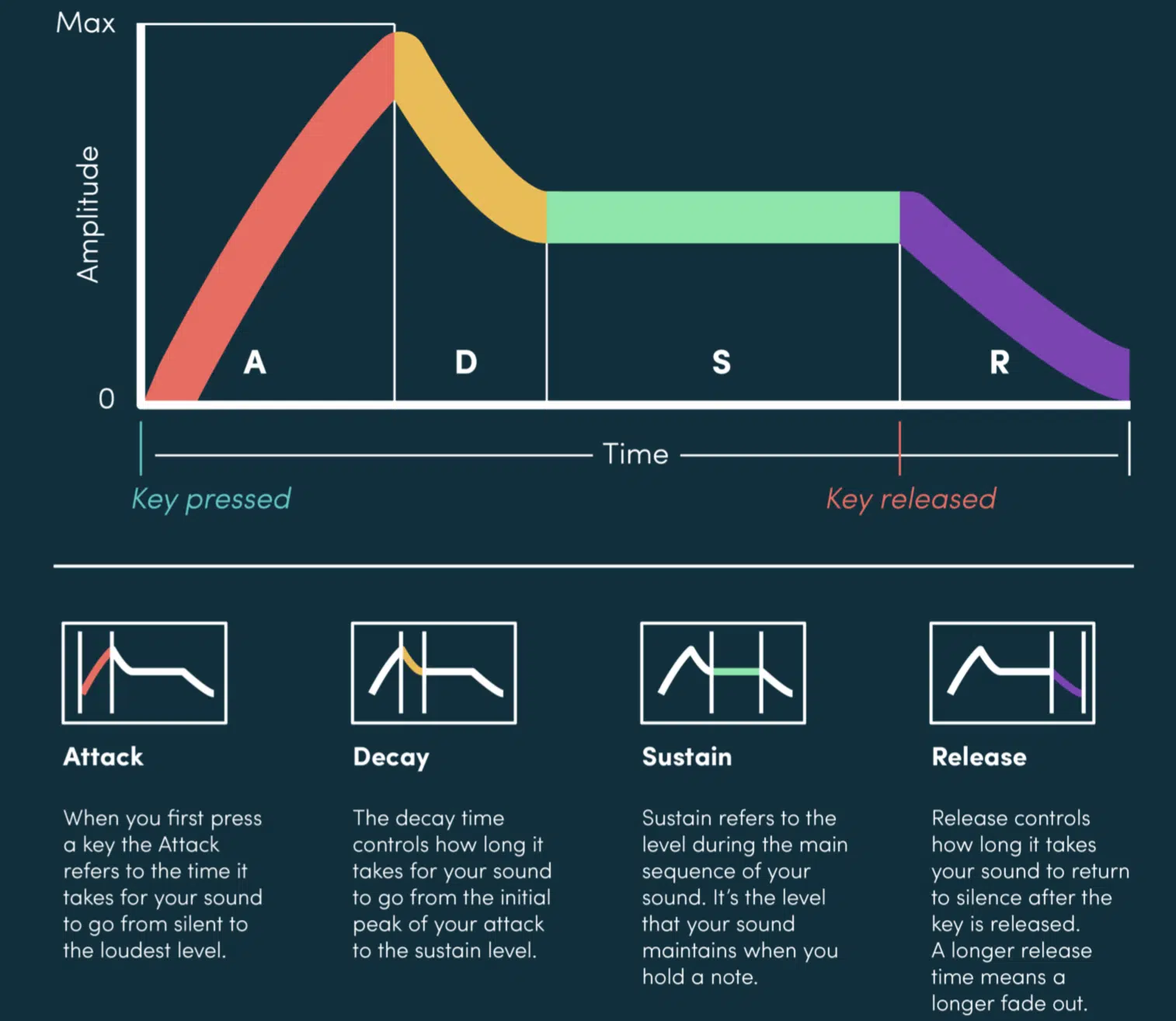
ADSR envelopes are key when it comes to shaping how a sound evolves over time.
ADSR stands for Attack, Decay, Sustain, and Release 一 the four stages that define the amplitude envelope of a sound.
Each stage controls different aspects of the sound’s volume and character.
The attack phase determines how quickly the sound reaches its peak level once triggered. For example, a short attack time creates a punchy drum hit, while a slow attack time results in a smooth, swelling pad sound.
The decay phase follows, where the sound evolves from the maximum amplitude to the final sustaining level. This can be seen in any synth preset where the sound will continue to play at this designated sustain level until it is no longer being held down.
The sustain phase maintains the sound at a consistent volume until the note is released; pretty straightforward.
The release phase occurs when the note is no longer depressed/held down and determines exactly how the sound at hand ends.
The release time is directly correlated to how long the sound takes to fade out, such as a guitar chord that lingers in the air after being strummed.
-
Pro Tip
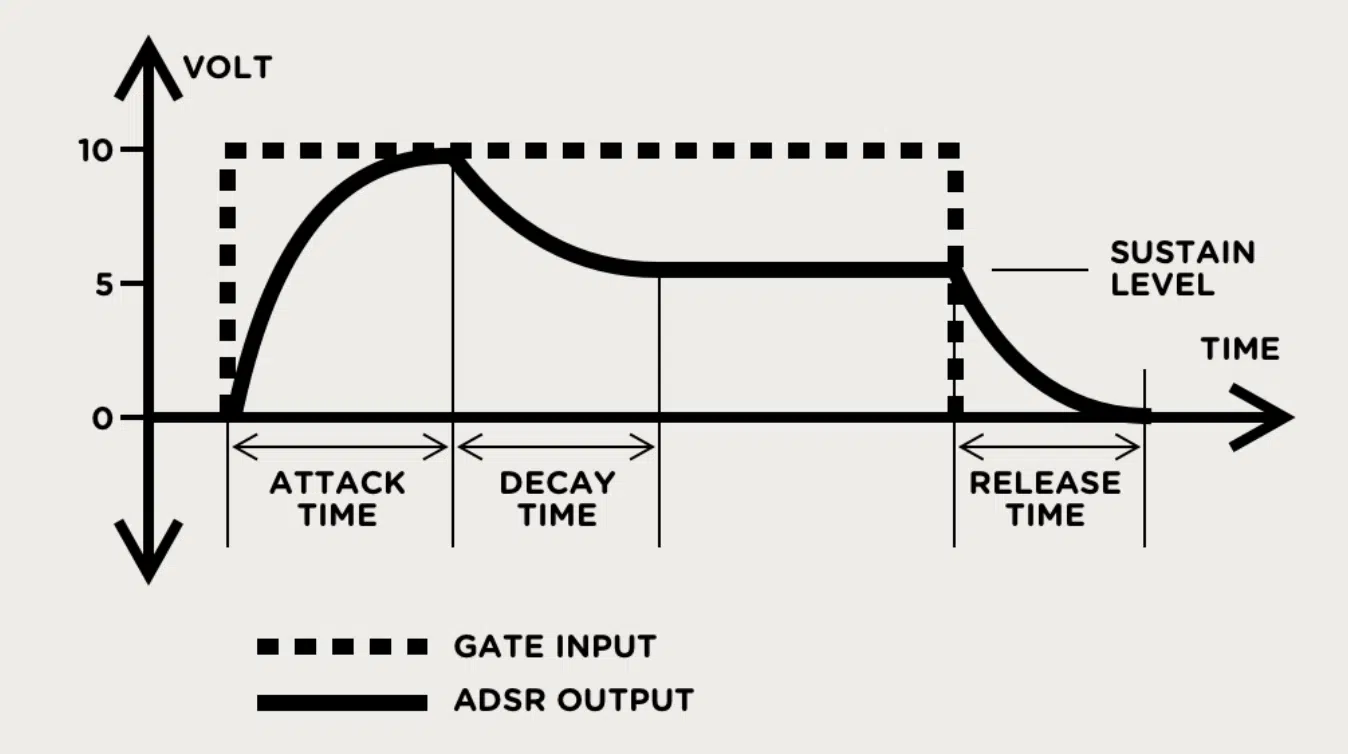
Exponential ADSR
These times are not the single factor determining how these stages are shaped and sound…
You can further shape and drastically change the envelope of your sound by changing and switching the shapes of these stages curves through the use of:
- Logarithmic shapes 一 Gradually increases or decreases, creating a more natural and smooth transition.
- Exponential shapes 一 Changes more abruptly, leading to sharper transitions.
And, depending on the particular envelope you’re using, the flexibility may even extend to curves in any and many custom shapes.
It’s all about experimentation, just keep that in mind.
Triggers & Envelopes
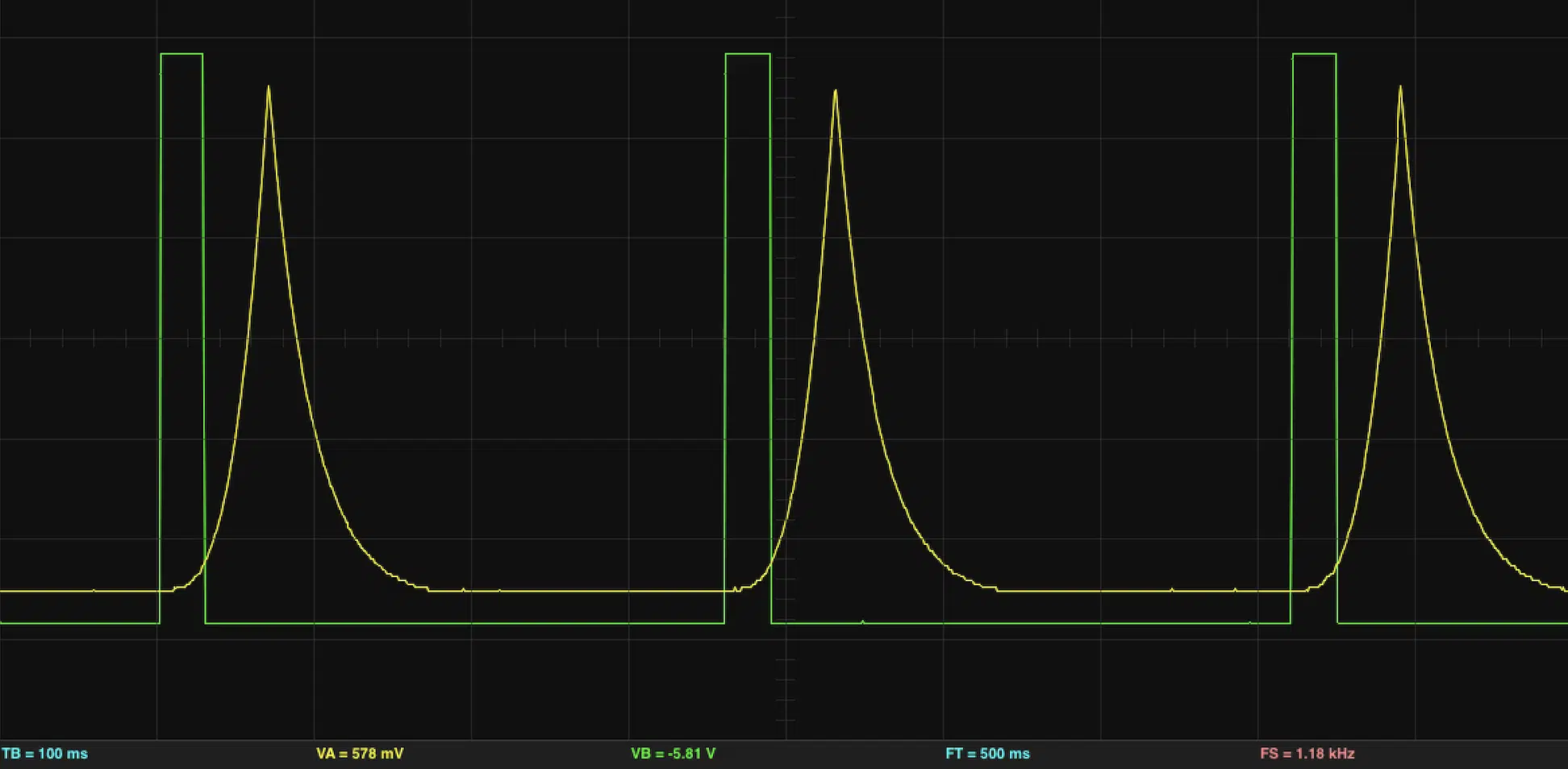
Triggers activate envelope generators, which shape the sound using an ADSR envelope.
When a key is pressed or a MIDI signal is received, the envelope generator starts the attack phase, rapidly increasing the sound to its maximum volume/full volume.
The envelope describes how the sound evolves from the initial trigger to its release.
For example, in electronic music production 一 adjusting the envelope’s attack/decay/sustain/release stages can seriously change a synth lead’s character.
Different instruments and synthesizers have varying envelope generators, but the ADSR concept remains consistent.
NOTE: The envelope’s control over parameters like filter cutoff and amplitude is key in EDM production so you can create complex sounds and textures.
The Many Uses of Envelopes: Breaking it Down
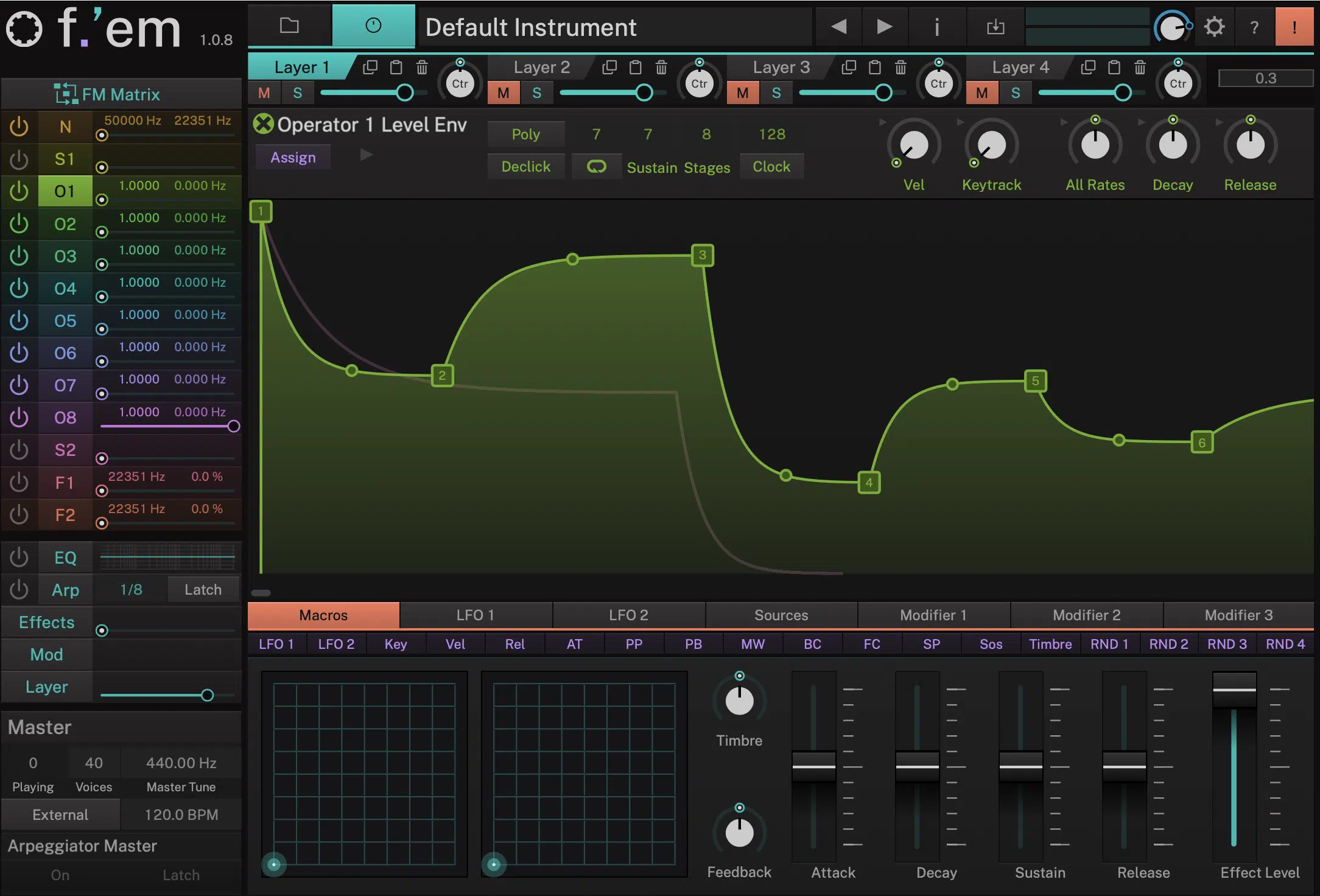
ADSR envelopes are incredibly versatile in music production because they can:
- Shape the amplitude of a sound
- Control the filter cutoff
- Even modulate pitch
For example, using a very short attack and long release time on a synth can create a sweeping effect that really sounds sick.
When it comes to drum machines, envelopes help sculpt the punchiness and sustain of each hit, which is key to getting the sound you really want.
Envelopes also play a key role in bass sound design, where adjusting the decay stage can add groove and rhythm.
With envelope generators, producers like yourself can transform basic sounds into dynamic and expressive elements in your tracks.
-
Additional Stages of an ADSR Envelope
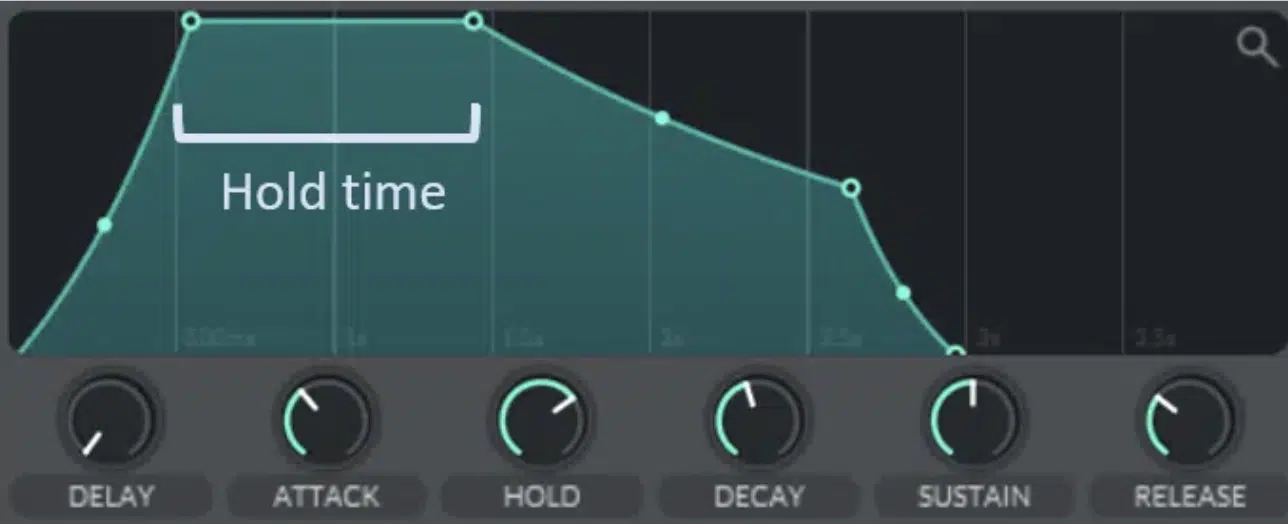
While ADSR stands for Attack, Decay, Sustain, and Release, some advanced envelope generators include additional stages other than the four stages.
These might include:
- An initial delay before the attack phase.
- A hold stage after the attack.
For example, adding a hold parameter can keep the sound at its maximum amplitude before entering the decay phase.
This is super useful for creating a staccato effect in electronic music.
Other parameters like slope control can shape how smoothly the transitions between stages occur.
Experimenting with these additional stages can lead to unique and complex sounds, which is what you should always aim for as a producer or sound designer.
NOTE: Modern synthesizers often feature these extended ADSR envelope generators, providing more than enough creative control.
Attack Phase
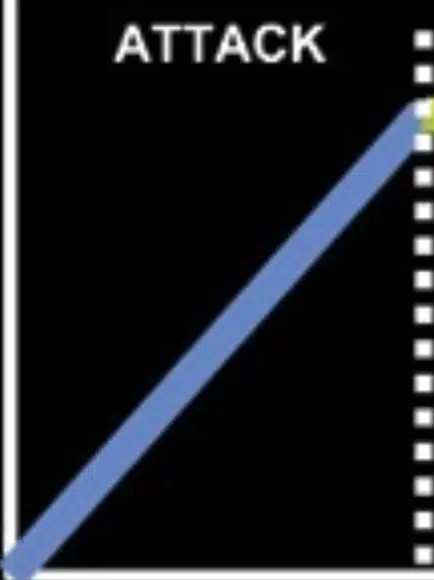
The attack phase of an ADSR envelope determines how quickly a sound reaches its maximum volume.
A short attack time results in an immediate, sharp onset, which is ideal for percussive sounds like drum hits and the like.
On the other hand, a slow attack time creates a gradual swell, perfect for ambient pads and atmospheric sounds.
For example, using a slow attack on a synth pad can add a dreamy quality to the sound.
The attack phase significantly impacts the initial perception of a sound.
In electronic music production, manipulating the attack time can change the feel of a track 一 making it more aggressive or more laid-back.
The attack stage is key for creating dynamic contrasts in music (and remember, it’s all about tension, release, and contrast).
Experimenting with different attack times on various instruments can help you discover some interesting results and up your game.
Whether you’re shooting for a punchy bassline or a smooth lead, understanding the attack phase is key, no buts about it.
Decay Phase
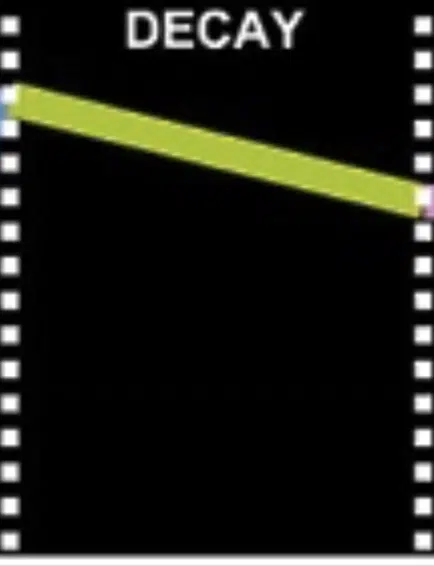
The decay phase comes after the attack and determines how quickly the sound drops from its maximum volume to the sustain level.
For example:
- A fast decay time on a snare drum gives it a tight, snappy feel.
- A long decay can make the snare sound fuller and more resonant.
The decay stage shapes the transition between the initial burst of sound and the sustained portion.
In sound design, adjusting the decay phase can add depth and character to a sound.
For instance, a medium decay on a plucked string sound can create a more natural, acoustic feel.
The decay time is everything when it comes to defining the overall texture of the sound.
Tweaking the decay phase can alter the groove and rhythm of a track 一 helping to create more expressive and dynamic sounds.
Sustain Phase

The sustain phase is unique among the ADSR stages because it represents a level rather than a time duration.
The sustain level is the volume at which the sound holds after the decay phase, which continues until the note is released.
For instance, a high sustain level keeps a piano chord ringing out until the key is lifted 一 a low sustain level, however, can create a more percussive sound, like a marimba.
NOTE: The sustain level controls how long a sound remains at a certain volume before the release phase begins.
The sustain phase is all about shaping the body of the sound… for pads and leads, a high sustain can create a continuous, flowing sound.
Adjusting the sustain level can dramatically change the character of a sound, making it more suitable for different musical contexts.
Release Phase

The release phase starts once the key is released, determining how long the sound takes to ultimately fade out.
- A fast release time makes the sound stop abruptly; useful for staccato effects.
- A long release time lets the sound linger, adding a tail to the note.
For example, a long release on a reverb-heavy synth can create a lush, expansive atmosphere that really brings an immersive experience to the table.
The release stage is essential for the natural decay of a sound.
Tweaking the release phase can make transitions smoother or more pronounced, for example a fast release on a drum hit can make it tighter and more punchy.
Just remember that the release phase is for creating a cohesive and polished sound.
Mastering how to manipulate release times helps in achieving the desired ADSR envelope for different sounds.
Key Applications of ADSR Envelopes
ADSR envelopes are used in different aspects of music production to shape sounds and create dynamic effects. So, now that you know the basics, let’s break down some key applications of ADSR envelopes in sound design.
-
ADSR in Synthesizers
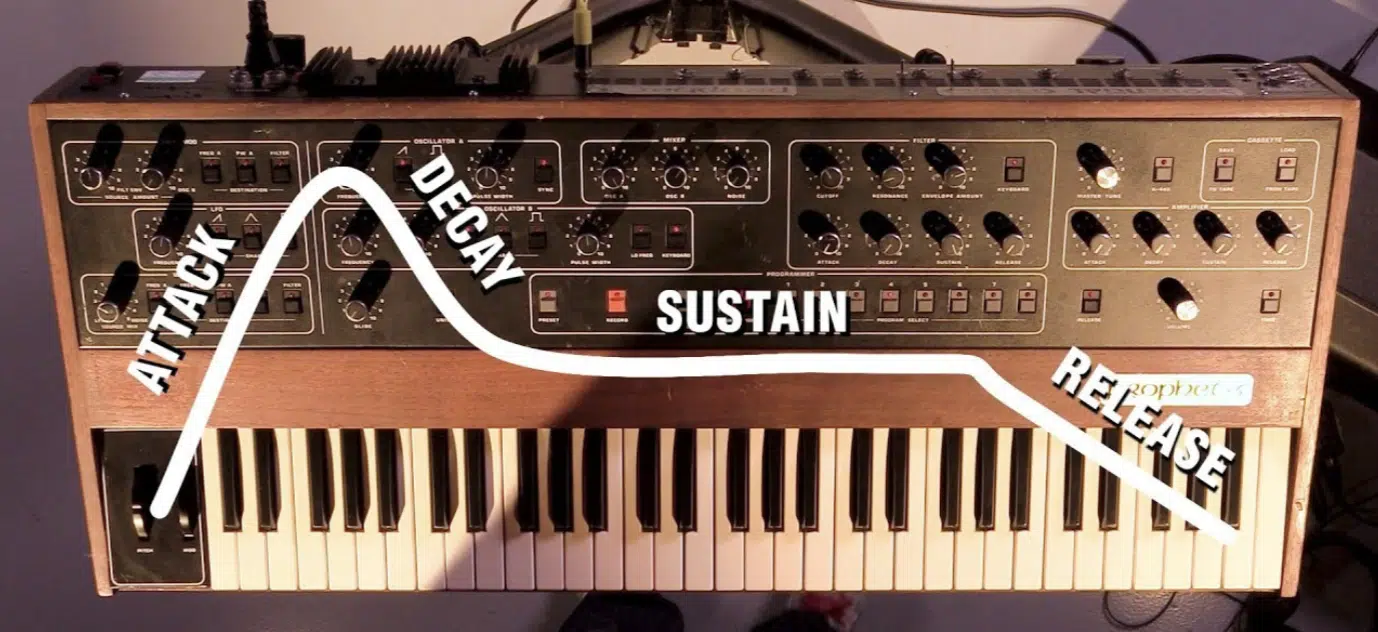
In synthesizers, ADSR envelopes are used to shape a sounds:
- Amplitude
- Filter
- Pitch
For instance, using a short attack and long release can create a swelling pad sound.
This gives the sound a quick rise to its peak volume for immediate presence, while the long release allows the sound to fade out slowly, creating an ambient, spacious feel.
Adjusting the decay and sustain levels can transform a simple synth into a dynamic lead or bass, it all depends how creative you get.
NOTE: Modern synthesizers offer flexible envelope generators for intricate sound shaping, which I personally love.
For example, you can use an ADSR envelope to modulate the filter cutoff to create that sweeping effect.
Understanding how to use ADSR envelopes in synthesizers is essential for producing unique and expressive sounds.
And, with practice, you can create anything from sharp, punchy leads to smooth, evolving pads and everything in between.
-
Drum Envelopes & Drum Machines
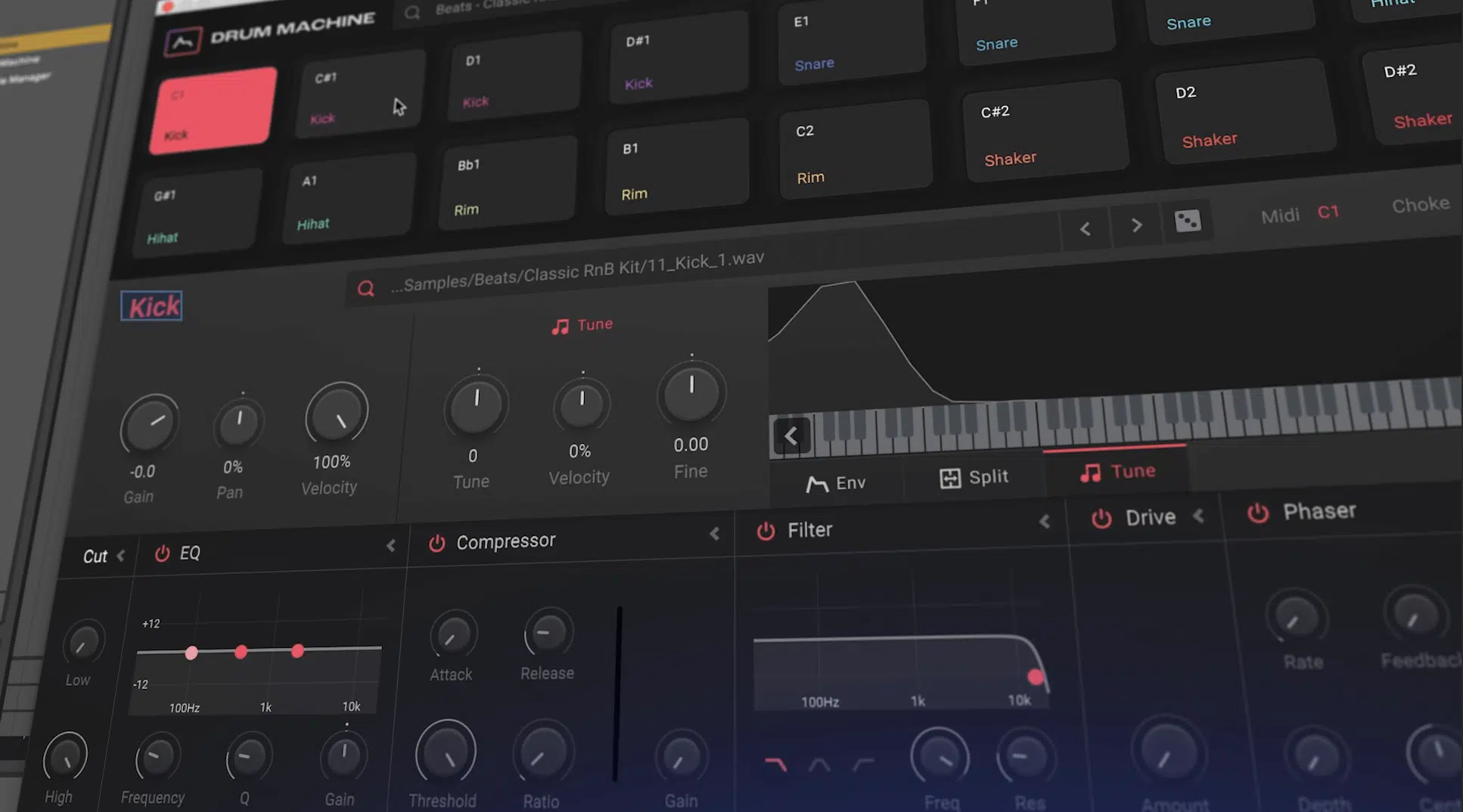
ADSR envelopes play a huge role in drum sound design, no doubt about it.
In drum machines for example, they control the shape of each hit, from the punch of a kick to the snap of a snare.
Like how a short attack and decay can create a tight, percussive hit.
Adjusting the sustain and release times can add more body or length to your drum sound 一 making it resonate longer and adding a fuller presence to each hit.
This can be super effective in genres like rock and EDM where impactful drums are everything.
Using ADSR envelopes in drum machines helps in creating precise and dynamic drum patterns and knowing how to tweak these envelopes can enhance the overall sound of your drum tracks.
-
Using ADSR in Bass Sound Design
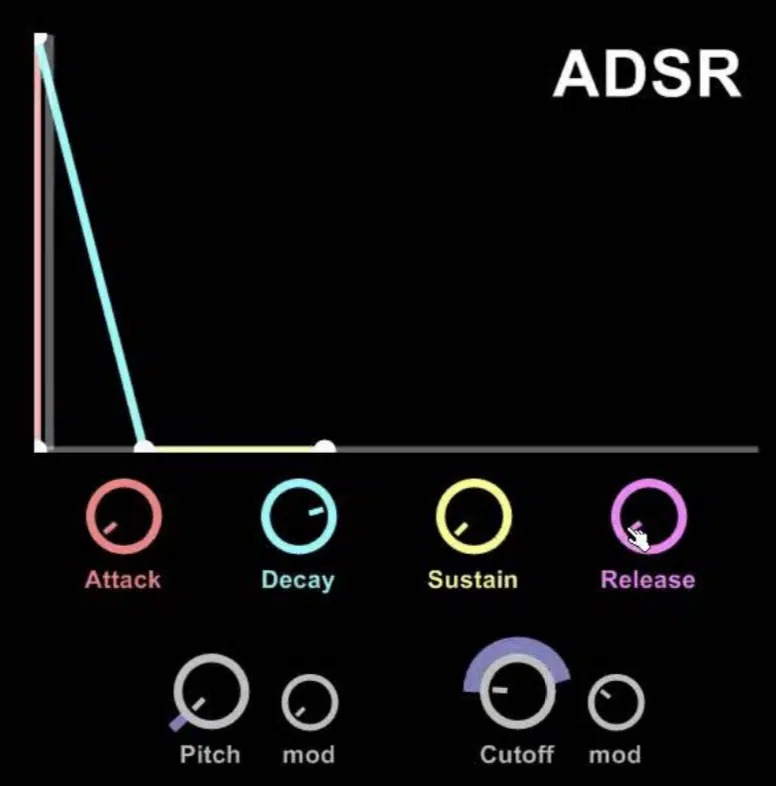
ADSR envelopes are vital in shaping bass sounds:
- A short attack creates a punchy bass hit.
- A longer attack can make it smoother.
Adjusting the decay phase adds groove and rhythm to the bassline, for example a long decay time on a bass can create a more resonant and full sound.
The sustain level controls how long the bass note holds 一 adding weight to the sound.
Using ADSR envelopes in bass sound design allows for creating versatile and impactful basslines, so make sure to play around with them.
Advanced ADSR Techniques
Advanced ADSR techniques can elevate your sound design skills, hands down. So, let’s cover some more advanced applications of ADSR envelopes so you can really get crazy with your own music.
-
ADSR in Complex Sound Design
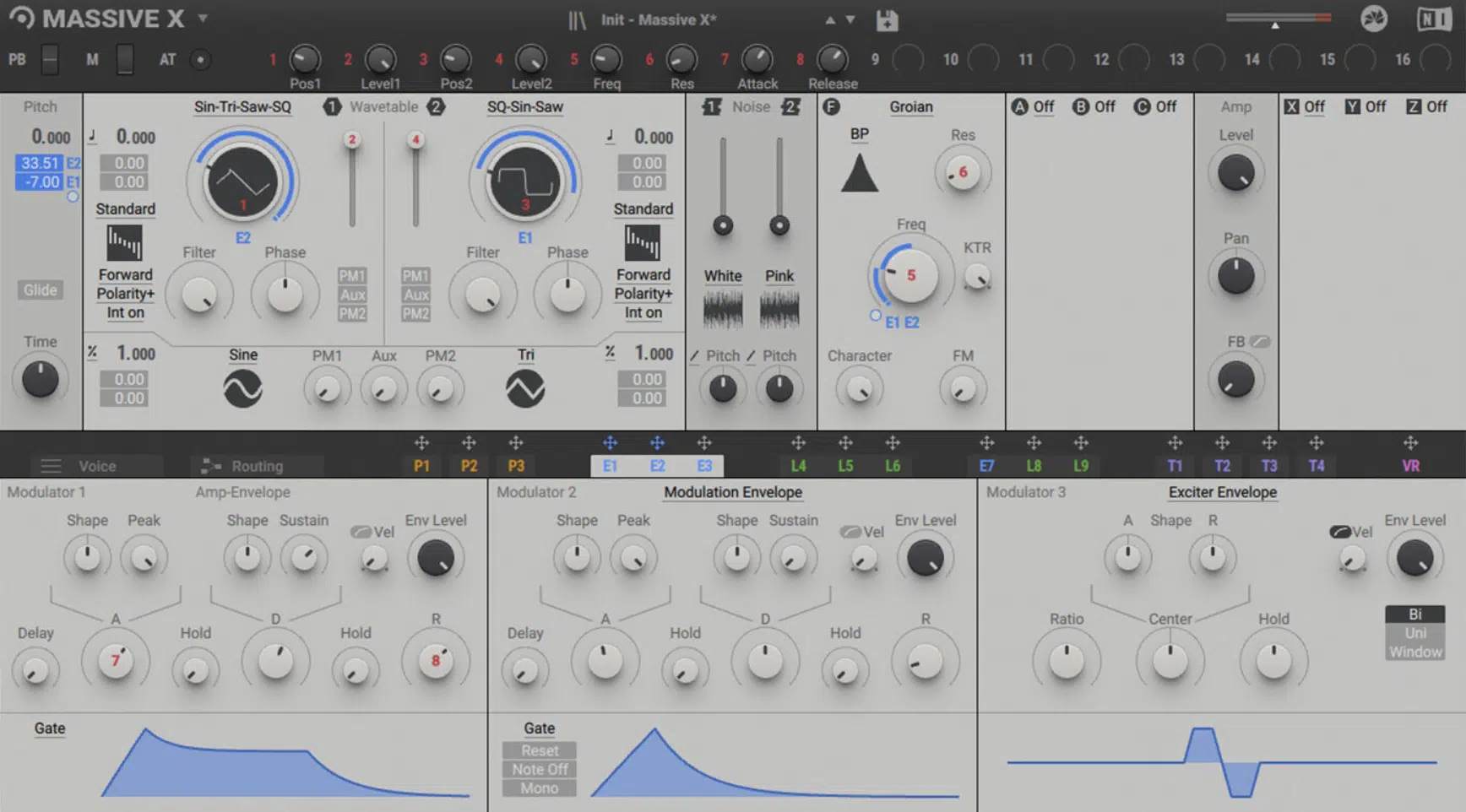
When it comes to more complex sound design, ADSR envelopes are used to modulate various parameters simultaneously.
For example, an ADSR envelope can control both amplitude and filter cutoff 一 creating evolving sounds that will blow your mind.
Using multiple envelopes can add depth and complexity to your sound.
For instance, one ADSR envelope could shape the attack/decay/sustain/release of the amplitude, while another modulates the filter.
This technique is super useful for creating intricate soundscapes and textures.
Advanced sound design often involves using ADSR envelopes creatively to achieve unique results, and knowing how to layer and manipulate these envelopes is key for innovative sound design, so keep that in mind.
-
Per-Voice Envelopes Polyphony in The Hardware/Analog World
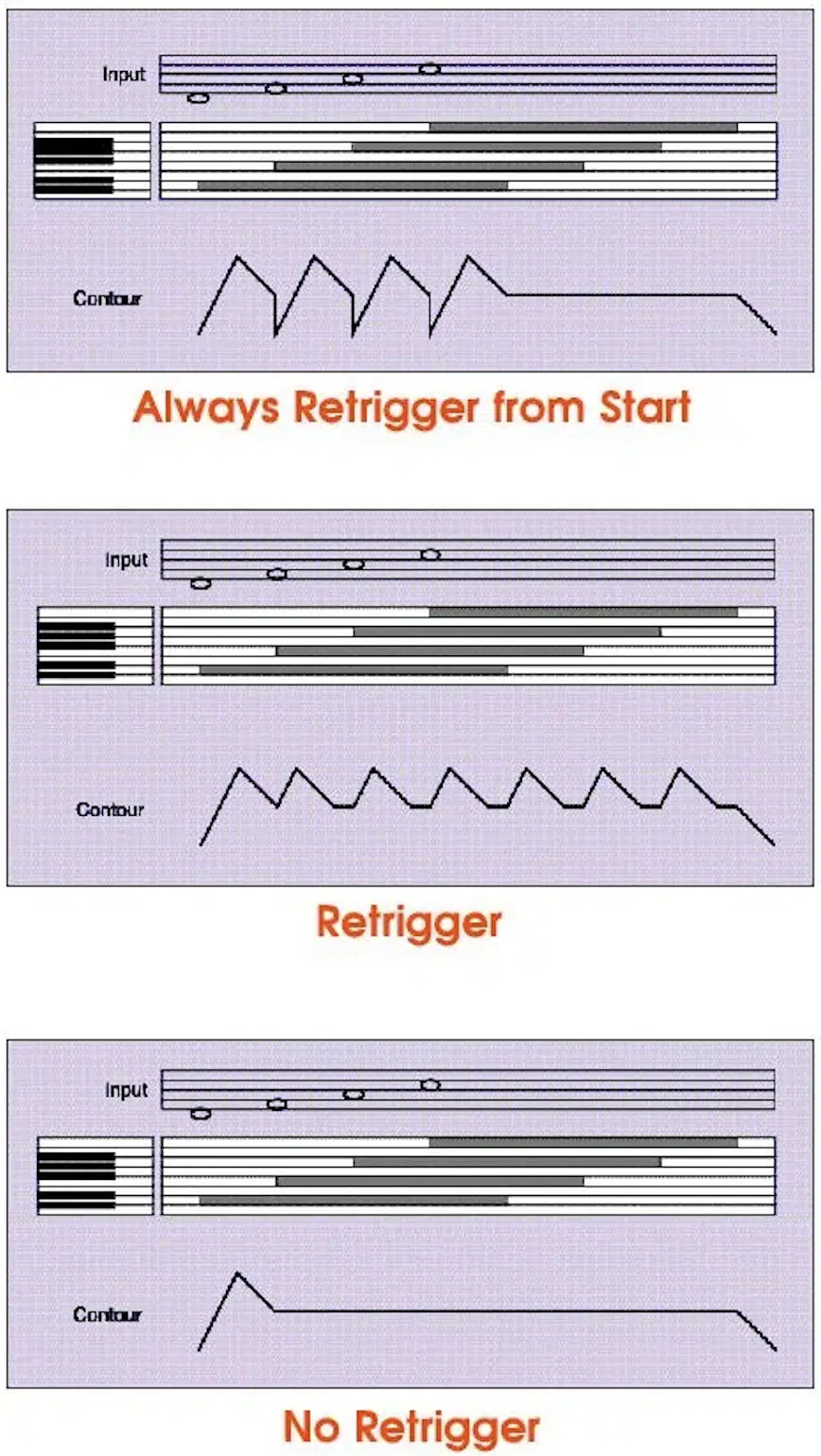
In the hardware and analog world, per-voice envelopes provide unique control over polyphonic sounds.
Each voice has its own ADSR envelope for more expressive and dynamic performances.
For example, in an analog synth, each note in a chord can have a different ADSR envelope setting.
Like one note having a fast attack and short release for a sharp, percussive sound, while another note has a slow attack and long release for a smooth, sustained texture.
This technique creates a sick, textured sound that is pretty interesting.
Per-voice envelopes are essential in hardware synths (and other synths) for creating detailed and nuanced sounds.
Understanding how to use per-voice envelopes can enhance your analog sound design and open you up to more creative possibilities in music production.
-
Envelope Followers
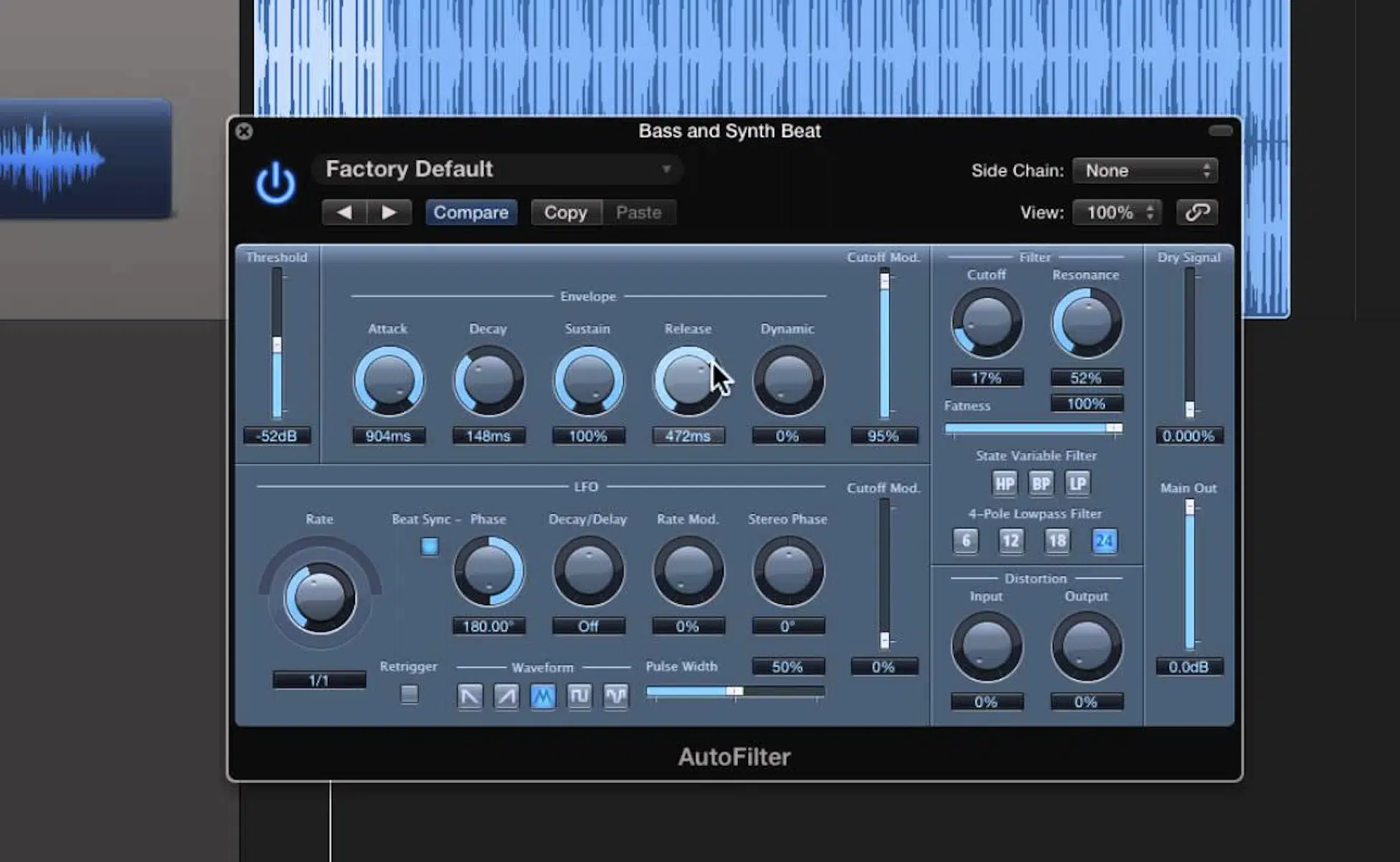
Envelope followers convert the amplitude of an audio signal into a control voltage 一 allowing for dynamic modulation of various parameters.
It basically lets you impart the envelope of any sound to virtually anything else you apply it to, which is pretty cool.
For example, you can use an envelope follower to modulate the filter cutoff based on the volume of a drum hit to create a more responsive effect.
This technique makes sounds interact in real-time to enhance the overall sound design.
Envelope followers are common in both hardware and software synthesizers, providing more expressive control (very useful for live performances where dynamics are key).
By understanding and utilizing envelope followers, you can create more lively and engaging soundscapes like you hear on the radio.
It will add a layer of responsiveness to your tracks, finally falling away from mediocrity, which is always the key.
-
Enveloping Sounds When You Don’t Have an Envelope (Music Production Secret)

Sometimes, you might need to shape a sound but don’t have an ADSR envelope generator available.
In these cases, you can use volume automation to mimic the effects of an ADSR envelope.
For example, manually draw an automation curve to create a slow attack and long release on a pad sound (as we touched upon earlier).
This technique allows for precise control over the sound’s evolution.
Additionally, using effects like compressors and filters with automation can simulate the attack/decay/sustain/release stages.
Understanding how to manually envelop sounds gives you more flexibility in sound design.
This approach ensures you can still achieve dynamic and expressive results even without traditional ADSR envelope generators, but with all the same concepts (dope, right?).
Bonus: 13 Things to Remember about ADSR Envelopes
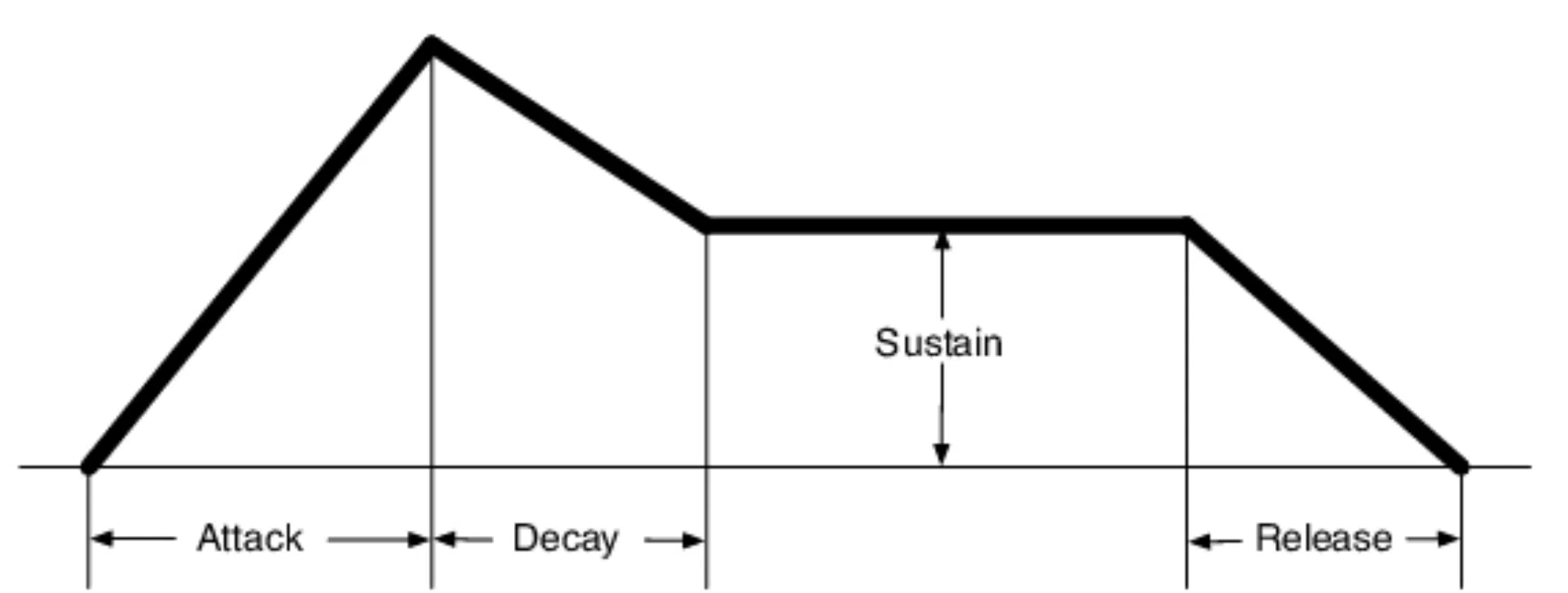
As a special bonus, here are some key points to remember about ADSR envelopes to help you master their use in your music production process:
- Versatility: ADSR envelopes are incredibly versatile and can be used to shape a variety of sounds. Whether you’re working with synths, drums, or effects, understanding how to adjust each stage of the ADSR envelope is key.
- Attack Phase: The attack phase of an ADSR envelope determines how quickly the sound reaches its peak. For punchy hi-hats or sharp synth leads, a short attack time is ideal. For pads and ambient sounds, a slow attack can create smoother transitions.
- Decay Phase: The decay phase follows the attack and leads to the sustain level. A short decay time is great for percussive sounds, while a longer decay can add depth to instruments like long notes or basses.
- Sustain Level: The sustain level is the volume at which the sound holds after the decay. For sustained chords and pads, a high sustain level works well. For plucks and stabs, a lower sustain level might be more appropriate.
- Release Phase: The release phase determines how long the sound takes to fade out after the note is released. A longer release can create nice tails for ambient sounds, while a fast release can be useful for tight, staccato effects.
- Envelope Generators: Different envelope generators might have additional stages or parameters, offering more control over the sound. Understanding your synthesizer’s envelope generator can open up new possibilities in sound design.
- Layering: Use multiple ADSR envelopes to control different aspects of your sound, such as amplitude, filter cutoff, and pitch. This technique can create more complex and interesting sounds.
- Application: ADSR envelopes are not only for synths. Apply them to drum samples to shape the transients, body, and tails of your hi-hats, kicks, and snares.
- Common Usage: The most common kind of envelope generator is the ADSR envelope. However, exploring other types of envelopes can provide more flexibility in your sound design.
- Practical Example: For a hard-pressed key sound, adjust the attack and decay phases to create a punchy initial sound followed by a quick drop to the sustain level.
- Memory Tips: Always remember that ADSR stands for Attack, Decay, Sustain, and Release. This simple acronym can help you recall the functions of each stage when designing sounds.
- Sound Shaping: ADSR envelopes shape the volume and dynamics of a sound, making them essential tools for any producer. Play around with adjusting each stage to see how it affects the overall sound.
- Experimentation: Don’t be afraid to experiment with extreme settings. Sometimes, unusual ADSR envelope settings can lead to unexpected results.
Understanding these different aspects of an ADSR envelope will give you greater control over your music production process/beats.
Therefore, you’ll be able to knock out professional and expressive sounds with ease.
ADSR Envelopes: Final Thoughts
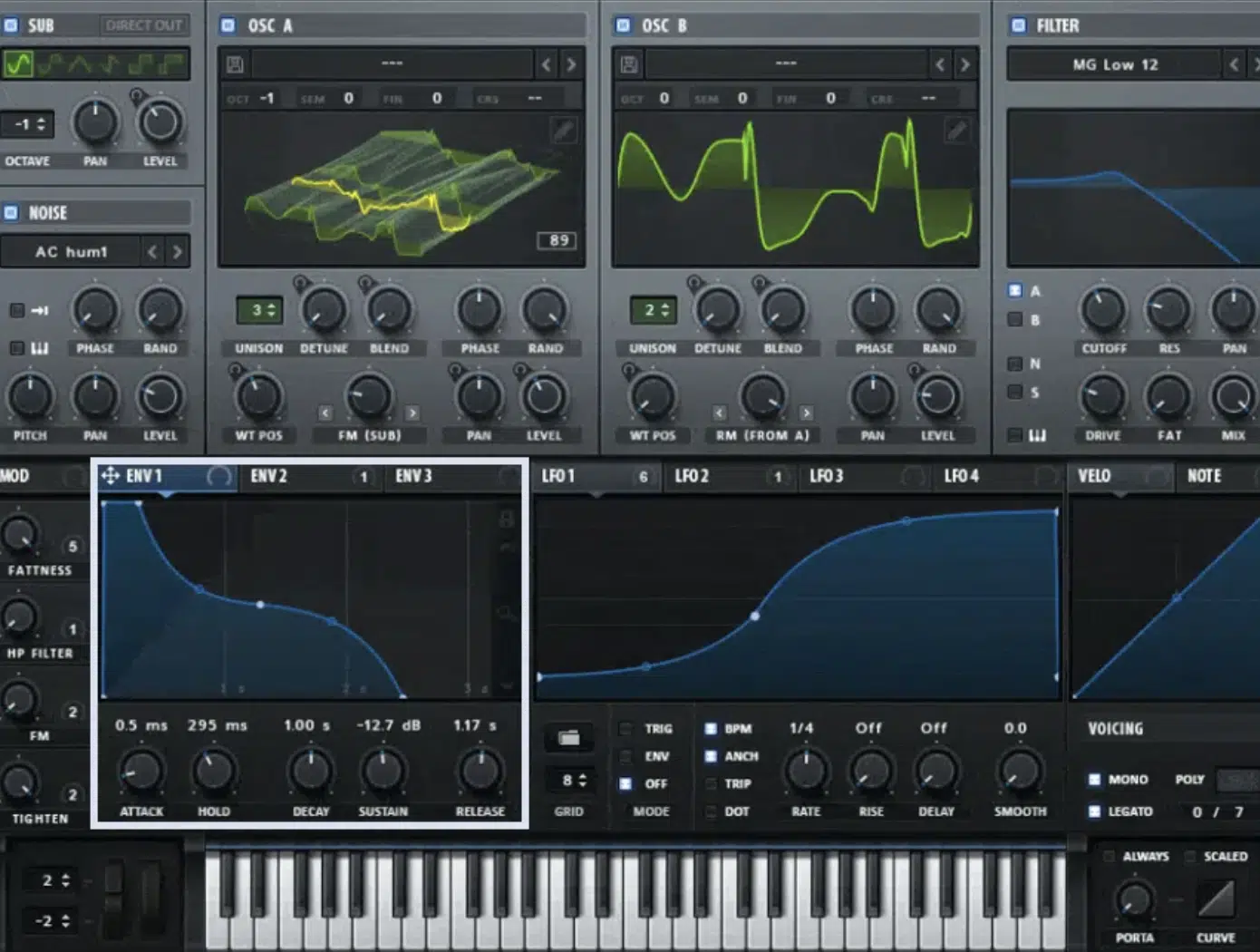
ADSR envelopes can help you shape the dynamics and character of your sound, allowing you to control how a sound evolves from the initial attack to the final release.
It gives you the flexibility to create anything from punchy drum hits to lush, evolving pads and everything in between.
Plus, you can use them creatively to add texture and depth to your tracks 一 making your tracks more show-stopping and professional.
With the tips and tricks you’ve learned here today, you can fine-tune your ADSR envelopes to create unique sounds and tailor your mixes with precision.
As well as mastering the fundamentals, you’ve explored advanced techniques that will set your productions apart over the competition.
To help you with your ADSR envelopes and sound design skills, check out these invaluable Free Project Files.
It includes 3 project files that show you exactly how to produce a professional beat, from start to finish.
This includes detailed ADSR envelope settings, expert sound design techniques, and step-by-step production processes.
They’re all created by top sound designers and producers, so you know you’re getting the highest quality resources.
Remember, mastering ADSR envelopes can significantly elevate your sound design and overall production quality.
So, keep experimenting and applying what you’ve learned to create more dynamic and expressive music.
With dedication and practice, you’ll be shaping sounds like a true professional in no time.
Until next time…







Leave a Reply
You must belogged in to post a comment.